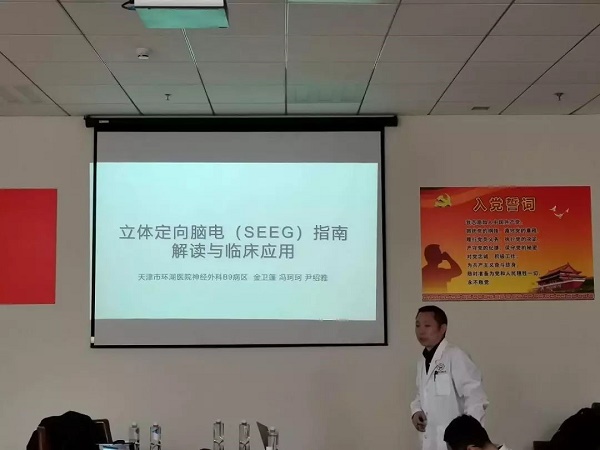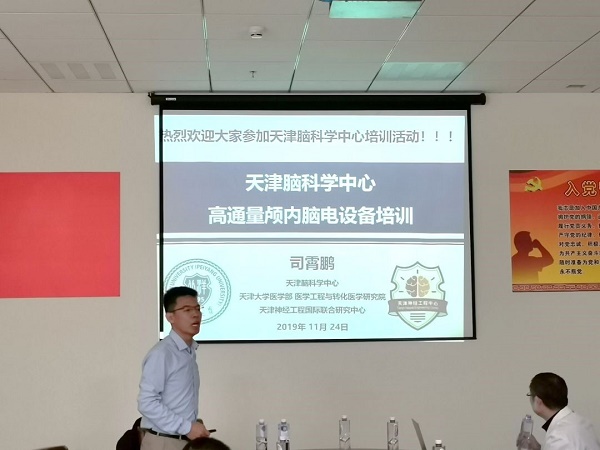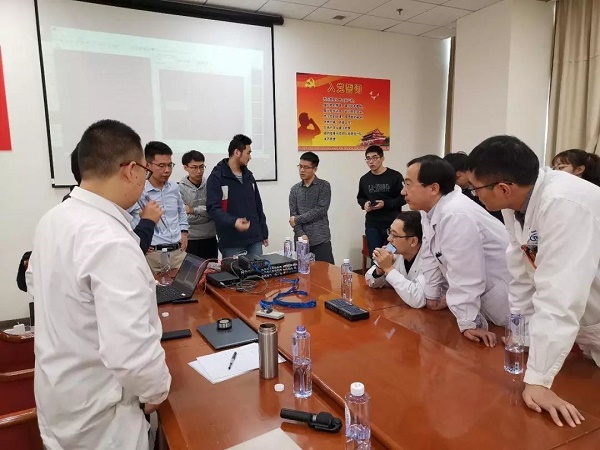On November 24, 2019, the Tianjin Brain Science Center sponsored a training meeting on the operation of high-throughput intracranial EEG equipment. The meeting was jointly organized by the Tianjin University Medical College and the Huanhu Hospital and was successfully held at Huanhu hospital. More than 20 professors, doctors and researchers from Peking University, Beijing Normal University, the Chinese Academy of Social Sciences, the 301st Hospital of People’s Liberation Army (PLA), Tianjin Medical University, and the Tianjin Medical University General Hospital attended the training.




Si Xiaopeng, associate professor of the TJU Medical College, pointed out that the intracranial EEG data, collected by the NeuroPort system with high time resolution and high signal-to-noise ratio, can be better applied to the study of brain mechanisms and brain diseases from an electrophysiological perspective. Therefore, it is of great clinical and scientific value to master relevant technologies for the study of functional neurosurgery and brain like artificial intelligence.
Yin Shaoya, director of the Huanhu Hospital gave a special report entitled "Guidebook Interpretation and Clinical Application of Stereotactic Electroencephalograms (SEEG) ". Yin said, as one of the earliest units to introduce video EEG monitoring equipment in China, in recent years, Huanhu hospital was on the forefront of epilepsy surgeries such as hemispherotomy and lobar sequestration surgeries. Furthermore, many SEEG-guided minimally invasive surgeries have been successfully performed by the Huanhu Hospital since the implementation of intracranial implantation of the SEEG electrode in patients with intractable epilepsy at the beginning of 2019. Combined with clinical cases, Yin also explained the procedures of SEEG electrode placement and other preparation work and summarized the achievements of hospital work in epilepsy surgical treatment and SEEG.
Bao Lei, an engineer with the Blackrock Company, introduced the latest clinical application and research progress of intracranial EEG at home and abroad, and detailed the system composition and functional characteristics of the most advanced invasive brain-computer interface device——the Blackrock Microsystems NeuroPort. He demonstrated how to collect signals from patients, and the process for operating the software. Finally, the single neuron discharge signals and local field potential signals collected by the device were clearly displayed on the device screen. Combined with years of working experience, he illustrated the key issues in the hardware connection and the use of the software, pointing out the possible mistakes and problems in the clinical signal acquisition process, and the basic methods to avoid and resolve them.
Consequently, participants had a lively discussion on the application of new intracranial EEG technology in the diagnosis and treatment of brain diseases and clinical rehabilitation. Combined with the features of the NeuroPort bioelectric signal processing system (high sampling rate, multi-channel, collectable neuron discharge, rich input and output interfaces), participants discussed the types and principles of acquisition of clinical patients' EEG signals, and the types of electrodes that can be applied. They also communicated in detail with the engineer on the skills required to operate the equipment.
The high-throughput intracranial EEG training meeting was a big success and was praised by participants. In addition, it was an opportunity for the Tianjin Brain Science Center to showcase their innovation driven "Clinical + Scientific Research" model.
By: Li Bei
Editors: Keith Harrington, Sun Xiaofang






